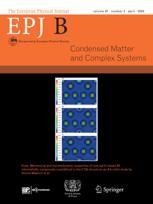Characterising shifts in Sicily’s seasonal rainfall
Over the past decade, rainfall patterns on Sicily have shifted from a 4- to a 2-season cycle, reflecting similar shifts taking place worldwide.
New York | Heidelberg, 19 November 2024
 Around the world, man-made climate change is increasing both the frequency and severity of extreme weather events. Seasonal patterns in rainfall are an especially important indicator of these changes: while a lack of rain can lead to more severe droughts, an excess can trigger catastrophic events such as landslides and flash flooding. To better understand the impact of these risks, it is vital for researchers to characterise these changes in as much detail as possible.
Around the world, man-made climate change is increasing both the frequency and severity of extreme weather events. Seasonal patterns in rainfall are an especially important indicator of these changes: while a lack of rain can lead to more severe droughts, an excess can trigger catastrophic events such as landslides and flash flooding. To better understand the impact of these risks, it is vital for researchers to characterise these changes in as much detail as possible.
Through new research published in EPJ B, researchers led by Vera Pecorino at the University of Catania, Italy, present a highly detailed analysis of recent changes in seasonal rainfall on the Italian island of Sicily. Their results confirm that over the past decade, the island’s rainfall patterns underwent a profound shift from a 4- to a 2-season cycle.
The team hopes that their work could help researchers to better understand the shifts in climate currently taking place across the globe, and to develop more feasible strategies for managing climate-related risks.
Within Europe, the Mediterranean is more affected by changes in seasonal rainfall than any other region. In the past decade, Sicily has experienced especially unusual trends in seasonal rainfall.
To study these trends, Pecorino’s team analysed hourly measurements of Sicily’s rainfall, taken since the beginning of the century: providing a more extensive dataset than any previous study. Their analysis of the data clearly showed that between 2013 and 2023, Sicily’s seasonal rainfall cycle underwent a fundamental shift.
During summer and autumn, rainfall significantly increased, with little variation between the two seasons. In contrast, rainfall decreased during the winter and spring – again with little variation between both seasons.
According to Pecorino’s team, these changes signal a clear shift from a 4- to a 2-season cycle – more similar to the rainfall patterns found in tropical regions. In turn, this shift closely coincided with an uptick in the frequency and severity of droughts and flash flooding: a trend which is already repeating in many regions across the globe.
Reference: Pecorino, V., Matteo, T.D., Milazzo, M. et al. Empirical analysis of hourly rainfall data in Sicily from 2002 to 2023. Eur. Phys. J. B 97:154 (2024). https://doi.org/10.1140/epjb/s10051-024-00792-3
Further Information
For more information visit: www.epj.org
Services for Journalists
The full-text article is available here.
Contact
Sabine Lehr | Springer | Physics Editorial Department
tel +49-6221-487-8336 | sabine.lehr@springer.com
